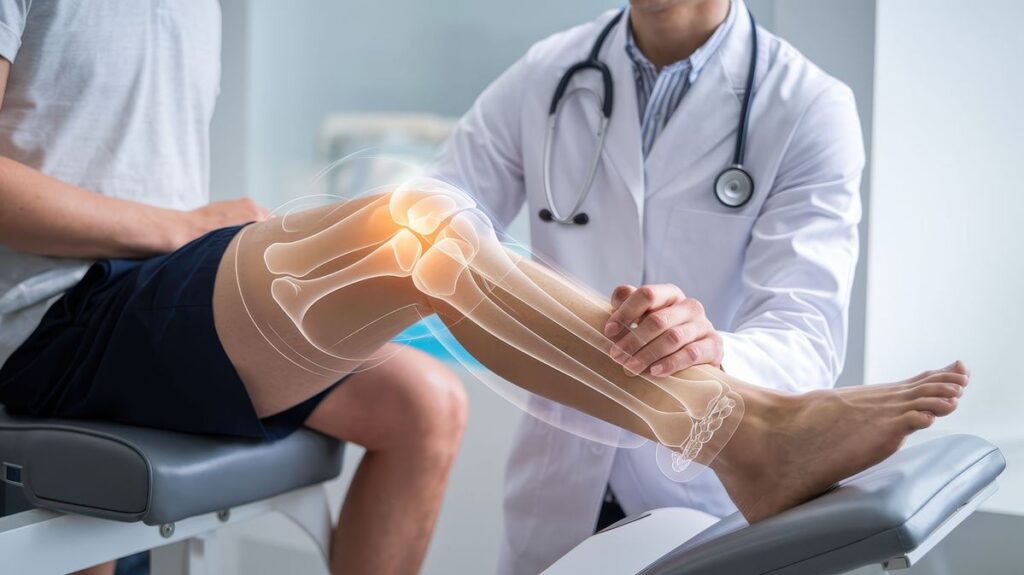
For many people, the word “surgery” brings up images of long hospital stays, large cuts, painful recoveries, and months of limited movement. It’s no wonder that so many patients put off getting the care they need for chronic joint pain — simply because they’re afraid of what surgery might mean.
But orthopedic surgery has come a long way. Thanks to medical advancements, Minimally Invasive Orthopedic Surgery (MIS) has changed how patients heal. These modern techniques allow for smaller incisions, less pain, quicker recovery, and better results — helping people get back on their feet faster and with greater confidence.
At Dr Patil’s Shree Orthopedic and Women’s Care Clinic in Aundh, Dr Vishal Patil (MBBS, MS – Orthopedics) uses advanced minimally invasive and robotic-assisted surgical techniques to make treatment safer, more precise, and more patient-friendly than ever before.
What Is Minimally Invasive Orthopedic Surgery?
Minimally Invasive Orthopedic Surgery, or MIS, involves performing surgeries through small incisions instead of large openings. Using specialized instruments and high-definition cameras, surgeons can see and repair damaged joints without disturbing much of the surrounding muscles or tissues.
This approach is used for a range of orthopedic conditions, including:
- Total or Partial Knee Replacement
- Hip Replacement
- ACL Reconstruction
- Meniscus Repair
- Fracture Fixation
- Arthroscopy for Sports Injuries
- Regenerative Cell and PRP Injections
Patients get the same long-term benefits as traditional surgery — but with less discomfort, faster healing, and minimal scarring.
Key Benefits of Minimally Invasive Surgery
1. Smaller Cuts, Smaller Scars
Traditional surgery often needs large incisions, while MIS procedures use smaller cuts (around 3–5 inches). This means:
- Less tissue damage
- Reduced pain after surgery
- Smaller scars and better cosmetic results
- Faster healing and recovery
2. Less Pain and Minimal Blood Loss
Because the muscles and soft tissues around the joint are preserved, patients experience:
- Less post-surgery pain
- Lower risk of swelling or inflammation
- Minimal blood loss during surgery
- Reduced need for strong painkillers
3. Faster Recovery and Shorter Hospital Stay
With MIS, recovery is much quicker. Many patients can go home within a day or two — sometimes even the same day. Most are able to stand or walk (with support) within 24 hours, which helps speed up healing and restores confidence.
4. Reduced Risk of Complications
Smaller incisions and advanced precision mean fewer chances of:
- Infection
- Blood clots
- Tissue or nerve damage
- Delayed wound healing
By protecting the muscles and ligaments around the joint, patients can move comfortably and safely during recovery.
5. Technology-Driven Precision
At the clinic, Dr Vishal Patil uses computer-guided and robotic-assisted systems for hip and knee replacements. These advanced systems ensure:
- Accurate implant placement and alignment
- Better preservation of healthy bone and ligaments
- Customized surgery tailored to each patient’s anatomy
The result is smoother movement, improved joint balance, and longer-lasting outcomes.
Who Can Benefit from Minimally Invasive Orthopedic Surgery?
Minimally invasive orthopedic surgery can be a great option for people with:
- Osteoarthritis or Rheumatoid Arthritis
- Hip or Knee Degeneration
- Avascular Necrosis (AVN)
- Sports Injuries such as ACL or Meniscus Tears
- Fractures and Ligament Injuries
During the consultation, Dr Vishal Patil performs a detailed examination, reviews scans like X-rays or MRIs, and then creates a personalized treatment plan — whether surgical or non-surgical — for the best results.
Real Patient Outcomes – Healing with Confidence
Patients at Dr Patil’s Shree Orthopedic and Women’s Care Clinic have seen remarkable recoveries — from athletes bouncing back after ligament injuries to seniors walking comfortably after joint replacement.
Many patients can walk independently within days of surgery and return to their routines much sooner than expected. Whether it’s robotic knee replacement, arthroscopic ligament repair, or regenerative treatments, Dr Vishal Patil’s focus remains the same: less pain, faster recovery, and lasting results.
The Takeaway: Modern Surgery Is Safer, Smarter, and More Comfortable
Gone are the days when orthopedic surgery meant long recovery times and painful procedures. Minimally invasive orthopedic techniques now offer:
- Smaller scars and less tissue damage
- Lower pain levels and minimal blood loss
- Shorter hospital stays
- Quicker return to daily life
- Better joint function and long-term results
If joint pain or injury is affecting your mobility or quality of life, it’s time to explore safer, smarter, and more effective surgical options.
Conclusion
Minimally Invasive Orthopedic Surgery represents the future of joint and bone care — combining cutting-edge technology with a focus on patient comfort.
At Dr Patil’s Shree Orthopedic and Women’s Care Clinic, Dr Vishal Patil (MBBS, MS – Orthopedics) offers advanced solutions for arthritis, joint degeneration, fractures, and sports injuries. With his expertise in robotic-assisted surgery, arthroscopy, and advanced rehabilitation, patients experience faster recovery and long-lasting relief from joint pain.